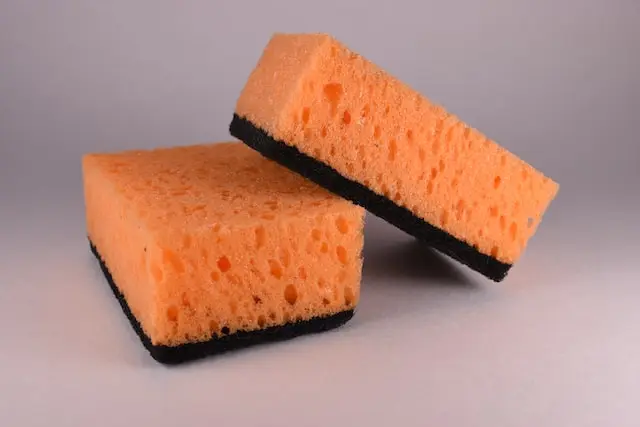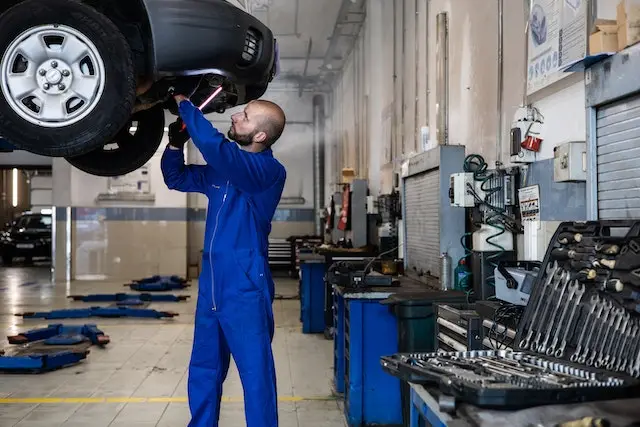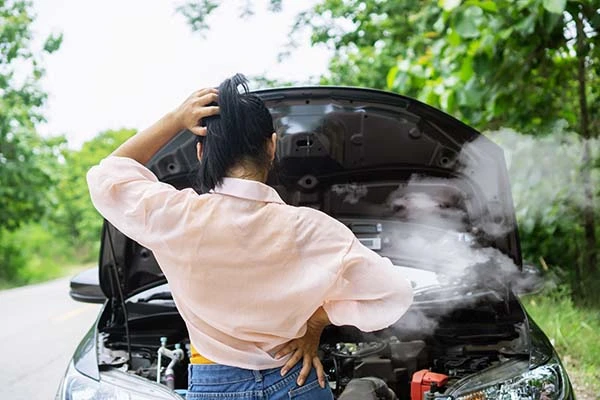A seemingly minor vehicle component, a water pump is a vital part of a cooling system that keeps the engine from overheating. Therefore, a faulty pump can cause severe consequences to your engine and vehicle as a whole – so how to tell if the water pump is bad? If you’re uncertain whether you have issues with it, make sure you learn how to recognize bad water pump signs.
Coolant leakage is the most common sign of a faulty water pump, but it’s not the only one. If this cart part has gone bad, you may also be able to hear high-pitched noise (due to the worn-off belt or bearing), see rust or gunk, or any external damage on the pump’s parts. Engine overheating and steam coming under your hood are signs of a failing cooling system, as well – and the problem may be in the water pump itself.
What Is a Water Pump and How Does It Work?
The water pump is one of the car’s crucial components. It keeps the coolant moving through the powertrain. It pushes the coolant through the cooling system and allows liquid to flow from the radiator into the engine and back to the radiator. Without the water pump, the coolant wouldn’t be able to move.
Thanks to the continuous liquid flow and the optimum operating temperature a water pump secures, the engine is safe from overheating. If the water pump starts to fail, so can the engine – and that’s the last thing you want.
So, how does a water pump work? The coolant is moved through the cooling system thanks to the impeller fins and centrifugal force. After the coolant circulates around the engine, it is transported to the radiator (by hoses), which is typically located at the front of the vehicle. Coolant that was heated from the engine is then cooled with the help of the radiator’s cooling fins. Once it exits the radiator, the coolant then goes back to the water pump, and the whole process starts over.

How Long Does an Average Water Pump Last?
The average lifespan of a water pump is measured by the miles passed. This cart part usually stays in good condition between 60,000 and 90,000 miles. The higher your vehicle mileage, the higher the chances you’ll need to replace it soon. Still, in most cases, you’ll be able to recognize the signs of a water pump failure once they occur.
Factors That Can Determine the Car’s Water Pump Lifespan
Wear and tear of different car parts, including the water pump, is to be expected over time. Still, keep in mind that constant and demanding use of a vehicle can shorten the pump’s service life. If it continually pumps coolant each day, don’t expect it to last more than ten years.
Additionally, the engine quality can also determine the pump’s lifespan, but so does abrasive sediment and other impurities in the liquid. At the same time, know that water pumps with three-wire motors are expected to have a few years longer service life than two-wire ones. In the end, remember that improper installation can also significantly shorten the pump’s lifespan.

How to Tell if the Water Pump Is Bad? Most Important Signs Your Water Pump Is Failing
While you’ll know when it’s time to change a tail light or, for example, replace a valve stem almost immediately after a problem occurs, bad water pump symptoms may not be that transparent. However, it’s time to check if you see some of the following signs:
Can You Replace the Faulty Water Pump Yourself?
Replacing a bad water pump is relatively simple – you won’t need much more time for this than for cleaning a steering wheel or, for example, changing a flat tire. On the other hand, expect to put more effort than for an easy disconnecting of a car alarm or, for instance, disabling a vehicle’s GPS tracking.
It’s on you to decide whether to take your vehicle to the mechanic or try replacing the part yourself. If you choose a DIY approach, however, make sure you have safety gear, such as protective glasses and gloves, by your side before you start.
At the same time, try to secure enough space for you to work. It usually means you’ll need to remove the battery – just make sure that of two battery cables, you remove the negative one first.
Get to the Old Water Pump
First of all, you’ll need to remove the belt – use or wrench on a tensioner pulley and pull downwards. It will relieve the tension of the belt, and you’ll be able to get it off quickly. In order to get to the pump, you’ll also need to remove the pulley, which you can do by simply removing the bolts holding it.
Remove the Water Pump and Clean the Surface
Place a drain pan beneath your vehicle in case you need to drain or catch the coolant, and start by removing the bolts (all eight of them) from the pump. So you can easily install the new one, I suggest placing bolts in the exact same spot on the new pump immediately after removing them. They can be different-sized, so it will ease the job of finding the right spots later on. Once the last bolt is removed, pop the pump off.
Before installing the new pump, make sure you clean the old gasket materials first. Instead of metal, use a plastic scraper, so you don’t damage the metal surface and cause new leakages. If you have problems removing the gasket material, try using a brake cleaner. In the end, use a scouring pad to make the surface completely clean and smooth.

Prepare the New Water Pump and Install It
Slide two bolts in a new water pump (the long ones are the easiest), and slide the gasket over them. To avoid unnecessary trouble, I advise you to purchase a pump that already comes with a gasket – that’s what I always do. Place a thread locker on the two longest bolts, so they don’t loosen up from the vibration (especially if you plan to use your car for off-road driving).
Then, put the new water pump into a position, tighten these two bolts by hand – and keep adding the remaining six ones. Torque the bolts down in a criss-cross pattern. It will allow the pump to mount to the engine surface properly. After it, install the pulley and slide the belt back – use the same technique you did for removing it.
Add the Coolant
By now, the water pump is removed – all that is left to do is add the coolant (and place the battery back, of course). When adding a new one, make sure it is adequate. If you’re unsure which one it is, check the owner’s manual or the labels on the bottle.
As for the coolant that has leaked into a drain pan, make sure you dispose of it appropriately. As with brake fluid, the used coolant is considered hazardous waste.

How Much Does a Water Pump Replacement Cost?
The cost of replacing the water pump will depend on the car brand and model, additional parts that require replacing (such as the belt) as well as on whether you plan on doing it yourself or hiring a mechanic.
If you want professional help, know that it is not inexpensive – it will cost you more than replacing U-joints or, for example, an ignition switch. If your water pump fails, expect to pay between $300 and $700 to replace it, on average.
Take a look at the table below to see examples of the average repair price depending on the vehicle type:
| Brand and Model | Part Cost | Labor Cost |
| Chevrolet Silverado | $350 | $200 |
| Ford F-150 | $150 | $250 |
| Toyota RAV4 | $400 | $350 |
| Honda CR-V | $150 | $200 |
| Toyota Camry | $150 | $300 |
What Happens if You Don’t Replace a Bad Pump?
A water pump is an integral part of the vehicle’s cooling system and the car itself. Neglecting to replace a faulty pump can have severe consequences on different vehicle parts, including the engine. A blown head gasket, cracked engine block, spark plug and engine overheating, damaged cylinder head, and burned pistons can all be the doings of a bad water pump. Therefore, if you don’t want your car to have performance issues, a faulty water pump needs to be replaced in a timely manner.

Read the Signs and Save Yourself the Trouble
Bad water pump signs are relatively easy to read. Therefore, once they show, make sure you don’t neglect them – you’ll only cause more damage to your vehicle. Spare yourself some unnecessary driving anxiety and get this car part repaired or replaced. Water pump replacement may not be cheap, but keep in mind that prolonging it can damage the other car parts, causing a much higher final repair bill.








